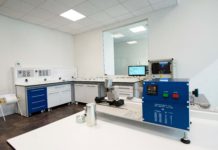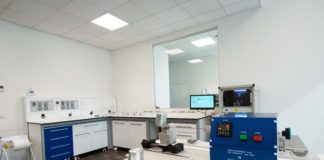The last meeting of Electric Motors Talks that have accompanied us in the last 3 months with interesting technical insights dealt, as primary subject, with winding Insulating Materials. The enthusiasm of Sebastian Kuester, CEO Quickfairs, was perceivable and involving: he connected from Pordenone, precisely where in September it will be held Coiltech exhibition that– finally – will open the doors to attending visitors.
The webinar was chaired by Professor Andrea Cavallini, from the Department of Engineering, Electric Energy and Information “Guglielmo Marconi of University of Bologna.
The morning session
Among speakers, the ice was broken by Stefan Hilbenz & Heinz von der Heide from Synflex company that proposes a complete range di insulation materials for any electrical insulation system. In fact, the core competence of SynFlex lies in the development, manufacturing and distribution of conducting and insulating products for electrical insulation systems of electrical motors, transformers and generators. With their speech “Thermal evaluation of electrical insulating materials”, the two experts have explained in-depth the temperature class rating multi-layer Laminates and the three possible evaluation criteria it is possible to adopt. «DIN EN 60626-3 can be called into question if materials are described in this standard. And after, an individual material or component of a laminate has been classified in a temperature class based on a long-term test. Third, a component of the laminate has been approved by means of UL FTA long-term test with a minimum thickness in an UL system».
The following speech was up to James Bonnett, Program Leader E-mobility di Victrex who described how new magnet wire with peek polymer coating can improve electric powertrain performance. Spotlights then cast on peek polymers and their unique combination of properties able to provide the solutions for the future electric architecture. «With the primary levers for EOMs being range/cost, charging speed and driving experience, the right insulation solution can offer several benefits». Among these, there are greater power ad energy density EV technologies, Improved efficiency through better thermal management and higher voltage powertrains/e-motors. Whereas, in the recharge infrastructure ambit, advantages are faster vehicle charging speeds, faster “Silicon Carbide”, switching technology.
Moreover, James Bonett explained that because more efficient power electronics technology is reducing rise times of inverter pulses, the insulation requirement on the wires is increasing. Besides, most critical point for the insulation to handle these stresses is in distributed wound machine, where Phase-Phase values of between conductors are most important. Among the successes shown, there is also the improvement of the motor efficiency modelled over WLTC-Class 3b drive cycle using Jaguar iPace.
Afterwards, Elantas company with Nils Bergemann who highlighted the Thermal management of impregnated stators, showing the computer modelling approach with practical results.
«The quality of the impregnation is most important. Air is the enemy: the best heat transfer is obtained if the slots are filled completely after impregnation. The best impregnation results can only be achieved if the resin can be applied easily. Enhanced thermal conductivity of impregnation resins is realized by the addition of inorganic fillers. Such fillers influence the impregnating properties of the resin».
Furthermore, the German expert explained how to isolate the effect on thermal management
Paying attention to the comparison of standard resin and resin with increased thermal conductivity on standard object. The company in brief: Elantas is top player manufacturer of insulating and protective material and it develops and produces wire enamels, impregnating resins and varnishes, casting and potting resins, electronic coatings, adhesives, flexible electrical insulation materials, special coatings, products for printed electronics as well as a wide range of tooling and composite materials. Nils Bergemann also detailed the relevance of investigated parameters, comparing filling factors with the thermal conductivity. «Filling factor is most sensitive parameter for heat dissipation. Lower thermal conductivity can be compensated by higher filling factor».
The following company was Axalta, renowned for coating systems, in the specific case it widely and exhaustively highlighted the solution Voltatex® 4224 – Impregnating Resin with high thermal conductivity. Lars-Goeran Rohrbeck talked about tasks of impregnating resins in electrical machines, highlighting reliable protection of the winding against stress of influences like heat, mechanical and electrical.
Besides, highest possible filling of all cavities within the copper wire coil offers better heat dissipation because of difference in thermal conductivity with air and commonly used impregnating resins.
Among the criticalities stressed by experts, there is the heat flow preferably within copper and impregnating resin in end windings and notches is bottle neck for heat transition to ambient air/cooling system and laminated core.
The afternoon session
The afternoon session started with Christoph Herold – from the company Von Roll Institute for High Voltage Insulation who spoke of Testing of electrical Insulation for High Performance Motors.
The speech started by focusing on the challenges in automotive sector, come increase charging speed, reduce losses, reduce weight, higher power and increased efficiency.
«Choice of insulation is dependent on required design e process».
In the speech, much room was also given to Partial Discharges (PD) and relative detection methods come electromagnetically or galvanically coupled PD measurements, optical detection, acoustic detection and ozone detection. «PD inception-voltages increase more or less linearly in relation to thickness».
Axalta Coating Systems company was protagonist again, with a different speaker:
Alexander Litinsky talked about Polyesterimide Resins for Medium and High Voltage Applications, highlighting medium and high voltage, the situation with Epoxy-Anydrides and polyester impregnating resins. Room was also given to the thermal evaluation and classification of insulation system used in rotating machines and the insulation system evaluation.
The webinar, but also the entire cycle of meetings, was ended by Demak with its manager Alberto Menozzi who spoke of EV/HEV Motors Potting with high performance resin systems.
The speech was aimed at illustrating the company’s forefront R&D ambit and testing laboratories of the potting laboratory and at explaining the targets of the resin encapsulation such as the reduction of the total weight, lower vibration and noise, thermal shock resistance, chemical and humidity resistance and size reduction with increased power and integration density.
«Stator impregnation is performed with coating resins applied by overheating due to poor heat dissipation, possible vibrations causing noise and winding shortcut and easier chemicals dusts pollution and humidity attack and damage of windings».



